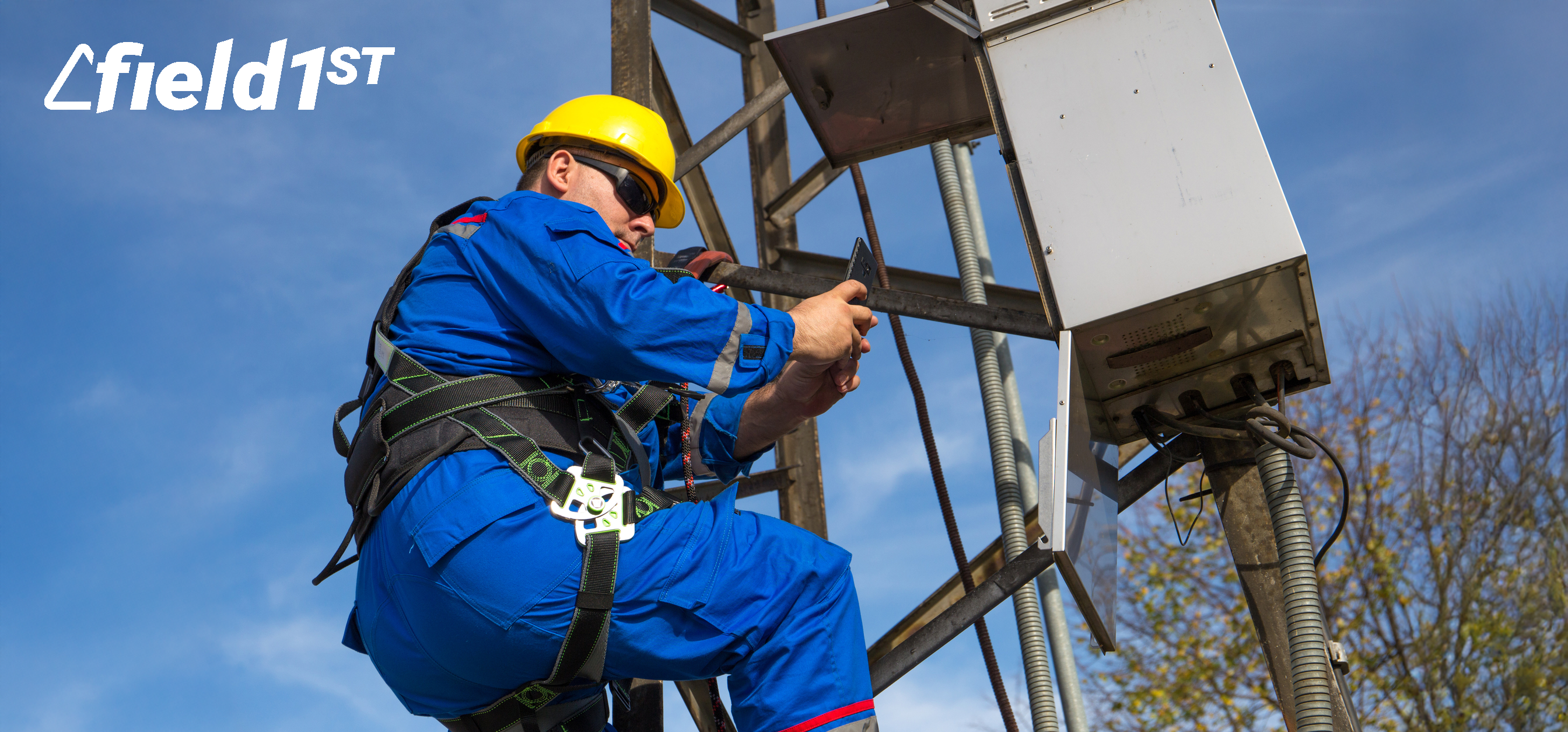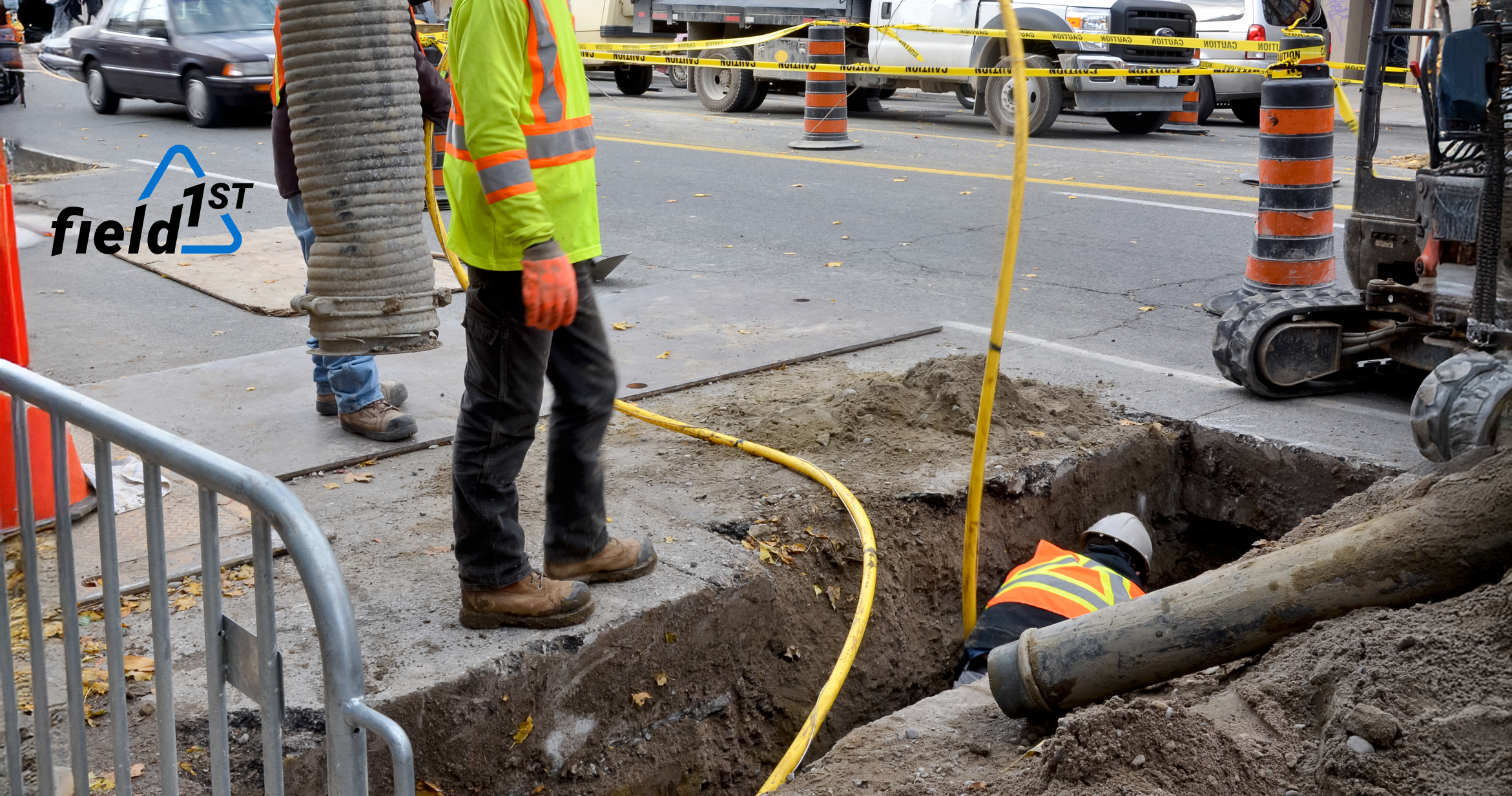- Stay Ahead of Risks: OSHA compliance software identifies potential hazards before they escalate, enabling swift action to protect workers and maintain smooth operations.
- Streamline Compliance Efforts: Simplify audits, automate reporting, and ensure your workplace consistently meets OSHA standards, reducing the risk of fines and penalties.
- Boost Team Engagement: Foster a culture of safety with tools that make it easy for employees to report hazards, access training, and stay informed on workplace safety protocols.
Ensuring OSHA compliance is a vital responsibility for any business. If you employ workers, meeting the specific regulatory standards of your industry is an absolute necessity. Establishing a safe workplace, as required by the Occupational Safety and Health Administration (OSHA) is crucial for preventing work-related injuries and fatalities, particularly in high-risk industries.
Revolutionizing Safety with OSHA Compliance Software
Workplace safety is critical in industries like construction, manufacturing, healthcare, and oil and gas, where the risk of accidents is significantly high. Ensuring compliance with OSHA regulations is not only a legal requirement but also a moral obligation to safeguard workers.
Traditional methods of managing compliance are time-consuming, prone to errors, and lack real-time oversight. This is where OSHA compliance software becomes a game-changer. By leveraging technology, companies can streamline safety management, reduce risks, and ensure seamless compliance.
Why High-Risk Industries Need OSHA Compliance Software
High-risk industries face unique challenges when it comes to workplace safety. OSHA regulations can be complex and challenging, requiring businesses to stay updated on frequently changing guidelines. Industries with high accident rates are subject to regular OSHA inspections, which increases the need for accurate record-keeping.
Moreover, non-compliance can result in hefty fines, legal liabilities, and reputational damage. Above all, a single safety oversight can lead to catastrophic incidents, endangering lives and disrupting business operations. OSHA compliance software addresses these challenges by automating compliance processes and ensuring companies meet regulatory requirements efficiently.

5 Key Benefits of Digitizing OSHA Safety Inspections and Compliance
Stay Ahead of Industry Standards
In today’s rapidly changing regulatory environment, staying ahead of industry standards is essential for maintaining compliance and ensuring workplace safety. Digitizing OSHA safety inspections and compliance will help your organization stay up-to-date with the latest regulatory changes, minimizing the risk of falling behind.
- Automated software updates ensure compliance with the most recent OSHA standards.
- Access to real-time data allows businesses to identify emerging risks and trends.
- Proactive compliance management enhances your reputation as a forward-thinking organization.
Minimize the Risk of Common Citations and Penalties
Non-compliance with OSHA standards can lead to costly penalties, legal liabilities, and reputational damage. Digitizing compliance processes, therefore reduces the likelihood of common violations and ensures your business remains audit-ready.
- Pre-built checklists tailored to OSHA regulations reduce oversight errors.
- Automated alerts notify you of upcoming deadlines for inspections and reports.
- Digital records make it easier to demonstrate compliance during OSHA inspections.
Streamline Processes with Digital Audit Trails
Manual record-keeping is time-consuming and prone to errors. Digitized audit trails simplify tracking and provide transparency in safety and compliance efforts.
- Centralized platforms store all inspection, training, and incident data in one place.
- Audit logs automatically document all safety activities and corrective actions.
- Instant access to historical data facilitates better decision-making and compliance reviews.
Boost Efficiency and Save Valuable Time
Digitizing OSHA inspections eliminates tedious paperwork and streamlines workflows, allowing your team to focus on higher-value tasks. Automation reduces administrative burdens and enhances productivity across departments.
- Mobile accessibility enables on-site inspections and real-time reporting.
- Automated report generation saves hours spent on manual documentation.
- Integration with other business tools ensures seamless data sharing.
Foster a Stronger, Safer Company Culture
A digital approach to OSHA compliance promotes a safety-first mindset across the organization. Employees are more engaged when they see management’s commitment to their safety and well-being.
- Transparent processes encourage employee participation in safety programs.
- Easy access to training materials ensures workers stay informed and compliant.
- A safer work environment boosts morale and reduces employee turnover.
The Pillars of an Effective OSHA Compliance Management System
A successful OSHA compliance management system requires a strong foundation to ensure workplace safety and regulatory adherence. These eight pillars form the prerequisites for automating and maintaining compliance while minimizing risks and liabilities:
1. Top Management Commitment
Strong leadership is the backbone of any OSHA compliance system. Management must demonstrate their commitment by prioritizing safety, allocating necessary resources, and fostering a compliance-first culture. Their visible involvement reinforces the importance of adhering to OSHA standards across all levels of the organization.
2. Employee Participation in Reporting
An effective reporting system encourages employees to report hazards, near misses, and incidents without fear of retaliation. OSHA emphasizes the importance of employee involvement in safety programs, as their frontline perspective is invaluable for identifying potential risks. A transparent and accessible reporting process builds trust and ensures timely corrective actions.
3. Training for OSHA Compliance
Comprehensive training programs are essential to equip workers with the knowledge and skills needed to recognize and mitigate risks. OSHA compliance requires employees to understand safety protocols, hazard communication standards, and emergency procedures. Regular training ensures employees remain updated on OSHA requirements and workplace safety practices.
4. Regular Inspections and Job Hazard Analyses (JHAs)
Periodic workplace inspections and Job Hazard Analyses are vital for identifying and mitigating risks. OSHA mandates regular assessments to ensure compliance with safety standards. By systematically reviewing work areas and job tasks, organizations can proactively address hazards and prevent violations.
5. Data Collection and Analysis for Compliance
Data is a powerful tool for achieving OSHA compliance. Collecting incident reports, inspection findings, and employee feedback enables organizations to identify trends and anticipate potential risks. Leveraging analytics helps organizations make informed decisions and implement preventive measures aligned with OSHA guidelines.
6. Prioritization of Risks and Implementation of Controls
OSHA emphasizes a hierarchy of controls to manage workplace risks effectively. Identifying and prioritizing significant risks ensures resources are allocated to areas of greatest need. Once risks are prioritized, implementing controls such as engineering solutions, administrative procedures, or personal protective equipment (PPE) mitigates potential harm.
7. Emergency Preparedness and Response Planning
Preparing for emergencies and unusual occurrences is a critical component of OSHA compliance. Organizations must have clear plans for handling natural disasters, chemical spills, equipment malfunctions, and other emergencies. Proper planning, combined with training and drills, ensures employees can respond effectively and maintain OSHA standards during crises.
8. Continuous Improvement Based on OSHA Standards
Compliance with OSHA is not static; it requires ongoing effort. Learning from past incidents, regulatory updates, and audit findings is essential for continuous improvement. Organizations must regularly review and refine their safety programs to adapt to evolving OSHA requirements and workplace conditions.

Key Features of OSHA Compliance Software
Modern OSHA compliance software solutions come with a host of features designed to simplify compliance and improve workplace safety. One essential feature is automated documentation and reporting.
The software records incidents, inspections, and corrective actions in real time, creating a unified process for maintaining accurate records. Customizable templates simplify the preparation of OSHA-mandated reports like Forms 300, 300A, and 301. Furthermore, detailed audit trails ensure transparency and accountability.
Training and certification management is another critical feature. With automated reminders, the software notifies employees and managers about upcoming training deadlines. It centralizes all training records and certifications, making it easy to track who has completed mandatory training.
The software also excels in incident and hazard management. Tools for root cause analysis, for example, help identify underlying reasons for incidents, while preventive measures are recommended to avoid similar issues in the future. Real-time alerts for hazardous conditions, whether detected through IoT devices or manual reporting, ensure immediate action.
Benefits of Using OSHA Compliance Software in High-Risk Industries
Implementing OSHA compliance software offers numerous advantages, from improving workplace safety to saving time and resources.
One of the primary benefits is enhanced safety standards. On one hand, proactive risk management allows organizations to address potential hazards before they lead to accidents. Data-driven insights, on the other hand, help analyze incident trends, enabling companies to develop targeted safety measures. In addition, involving workers in safety programs through the software fosters better engagement and adherence to safety protocols.
The software also streamlines compliance processes. By automating the preparation of OSHA-required documents, businesses can save significant time and effort. Real-time updates keep companies informed about regulatory changes, ensuring they remain compliant. Moreover, organizations can maintain inspection readiness, reducing stress during unannounced OSHA inspections.
Cost savings are another important benefit. The risk of fines due to non-compliance is minimized, and improved safety records can lead to lower insurance premiums. Additionally, by automating routine tasks, the software allows managers to focus on other critical areas of operation, improving overall efficiency.
How to Choose the Right OSHA Compliance Software
Selecting the right OSHA compliance software is essential for maximizing its benefits. Companies should consider whether the software offers industry-specific features. For instance, construction firms may require advanced inspection tools, while healthcare facilities might prioritize training management.
User-friendliness is another crucial factor. A solution with an intuitive interface will encourage adoption among employees and managers. Integration capabilities are equally important, ensuring the software can work seamlessly with existing systems like HR platforms or IoT devices. Businesses should also choose a scalable solution that can grow with their operations and accommodate future needs. Reliable customer support is vital for addressing technical issues and ensuring smooth implementation.
Common Questions About OSHA Compliance Software
What is OSHA compliance software?
OSHA compliance software is a digital tool designed to help businesses manage workplace safety and comply with OSHA regulations efficiently. It automates processes such as incident reporting, training management, and hazard identification.
Who can benefit from OSHA compliance software?
Any organization subject to OSHA regulations can benefit, but it is especially useful for high-risk industries like construction, manufacturing, healthcare, and oil and gas.
How does OSHA compliance software improve safety?
By automating hazard identification, training management, and reporting, the software enables proactive risk management and ensures employees adhere to safety protocols.
Is OSHA compliance software expensive?
Costs vary depending on features and scalability. However, the long-term savings from reduced fines, lower insurance premiums, and fewer accidents often outweigh the initial investment.

People Also Ask
1. How does OSHA compliance software help with inspections?
OSHA compliance software simplifies inspections by providing pre-built checklists, maintaining detailed records, and generating reports automatically. Mobile accessibility further allows inspectors to document findings on-site.
2. Can OSHA compliance software be customized?
Yes, most OSHA compliance software solutions offer customization options to meet industry-specific needs and integrate with existing systems.
3. What industries use OSHA compliance software the most?
High-risk industries like construction, manufacturing, healthcare, and oil and gas are the primary users of OSHA compliance software due to their stringent safety and compliance requirements.
4. Is OSHA compliance software mandatory?
While it’s not mandatory, it’s a highly effective tool for managing OSHA compliance and improving workplace safety.
Further Reading
For businesses in high-risk industries, staying informed about the latest safety standards and compliance strategies is crucial. The articles below provide valuable insights into navigating evolving OSHA regulations, addressing industry-specific challenges, and implementing effective solutions to improve workplace safety. Explore these resources to enhance your understanding and take proactive steps toward a safer, more compliant work environment.
OSHA Compliance in 2025: How to Navigate Evolving Standards, Industry Challenges and Essential Solutions for Workplace Safety
Improving compliance with occupational safety and health regulations: an overarching review
Investigation on the Compliance of Occupational Safety and Health (OSH) Legislations among Contractors and Potential Interventions to Improve Construction Safety Performance
Take Action Today: Redefine Safety with OSHA Compliance Software
The digital revolution is here, transforming industries at an unprecedented pace. Safety inspections and compliance are no exception, with digitization poised to become the standard in the coming years. By adopting OSHA compliance software, high-risk industries can transform their approach to safety and compliance, fostering a safer, more efficient workplace.
Instead of playing catch-up when the shift becomes inevitable, why not take proactive steps today? Embrace the future of safety and compliance with Field 1st, your partner in continuous digital transformation. Start now and stay ahead.





